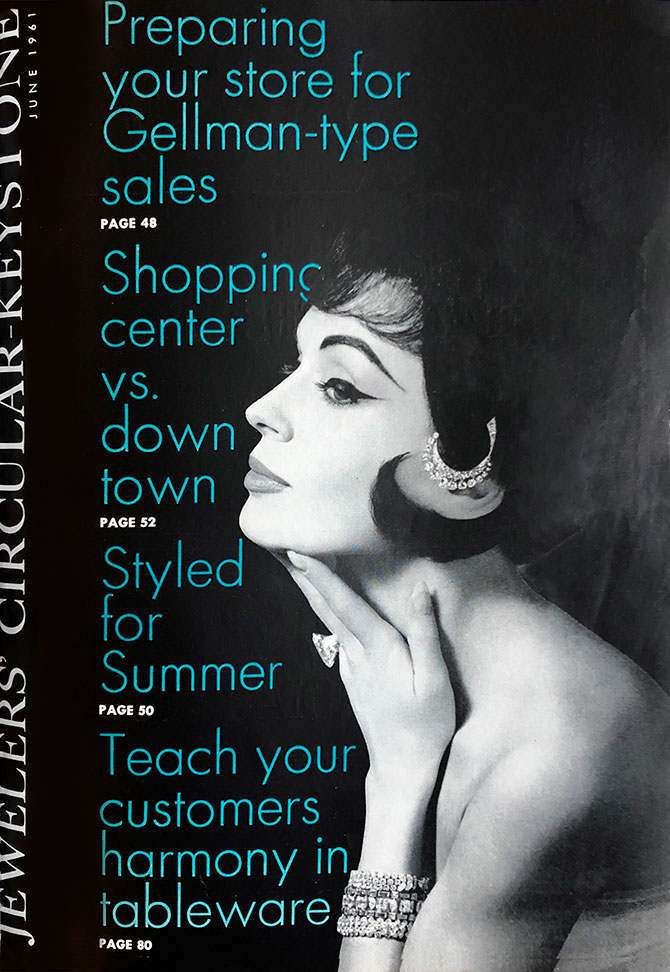
More interesting—and surprising—than a catalog of all the changes to affect jewelry retail since 1869 is a catalog of things that haven’t changed. And there are plenty. On heavy rotation in our issues over the last century and a half, you’ll find all of the following: reporting about crime in all its iterations, from classic smash-and-grabs to scams perpetrated by swindlers and dishonest employees; sales, marketing, and merchandising stories on how to “enliven business” and “clinch the sale”; trend and fashion coverage chronicling the changing tastes of an increasingly affluent population; and diamond news galore, including discoveries, market updates, supply forecasts, design novelties, promotions, and, yes, selling strategies.
But most enlightening of all? The trade’s chronic hand-wringing over imitation gems, artificial stones, and fakes. “Dealers in diamonds are frequently asked by their customers if the process of making artificial diamonds has yet met with such success as to depreciate the genuine ones in value,” we wrote in April 1880. Were it not for the old-timey syntax and the attribution—this quote as well as those you’ll find on these pages—could easily describe today’s jewelry business. My, my, how times don’t change!
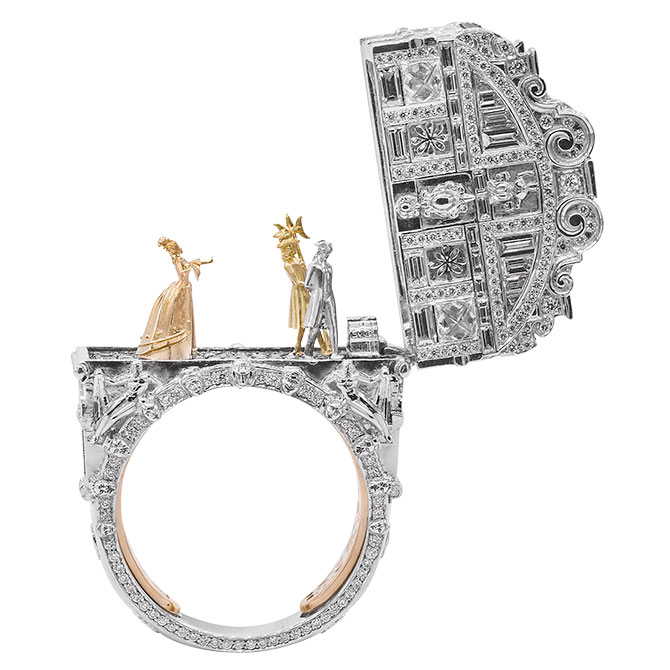 THE JEWELRY TRADE
THE JEWELRY TRADE
It is possible for an object to be artistic without being art in the strict sense, just as it is possible for a thing to be realistic without being real. No doubt a good deal of jewelry is not even artistic; some of it is; a little of it reaches a plane that might incline one to classify it among examples of fine art.
—“Can Jewelry Be Classed as a Fine Art?” The Jewelers’ Circular-Weekly, Feb. 4, 1914
Bridge of Sighs ring with purple spinel and diamonds; price on request; alessio-boschi.com
SALES
Never domineer. No one likes to be dominated, not even the weakest of characters. Sometimes it closes tough sales but it always makes lasting enemies. There’s no repeat business for the domineering salesman.
—“Unusual Bridal Service Builds Good-Will and Sales,” The Jewelers’ Circular-Keystone, March 1952
BRIDAL
Today’s bride is not so traditional as her grandmother in selecting her wedding date. She is likely to make it in the dead of winter or the height of summer. So don’t concentrate all your bridal promotion on June, but make it an all year-’round affair for most satisfactory results.
—“Plan Your Bridal Window for Every Season,” Jewelers’ Circular-Keystone, May 1956
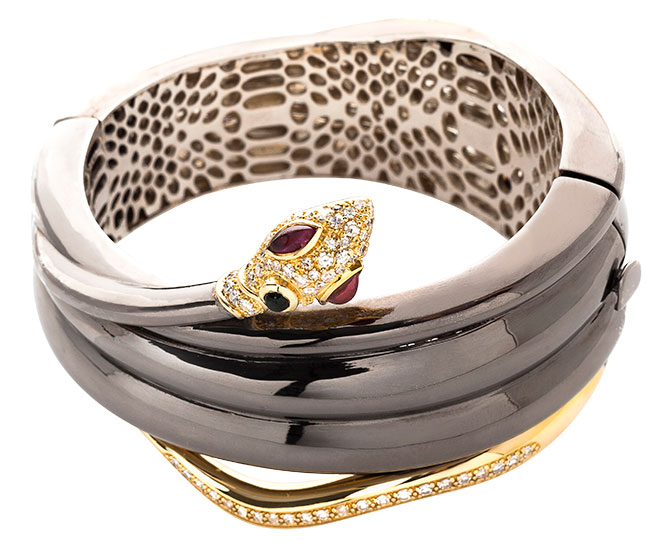 TRENDS
TRENDS
Oxidized silver bangle bracelets are once more in demand.
—“Novelties in Jewelry,” The Jewelers’ Review, September 1893
Victoria Serpent cuff with green and pink tourmaline and diamonds in 18k gold and black rhodium silver; $10,500; sorellinanewyork.com
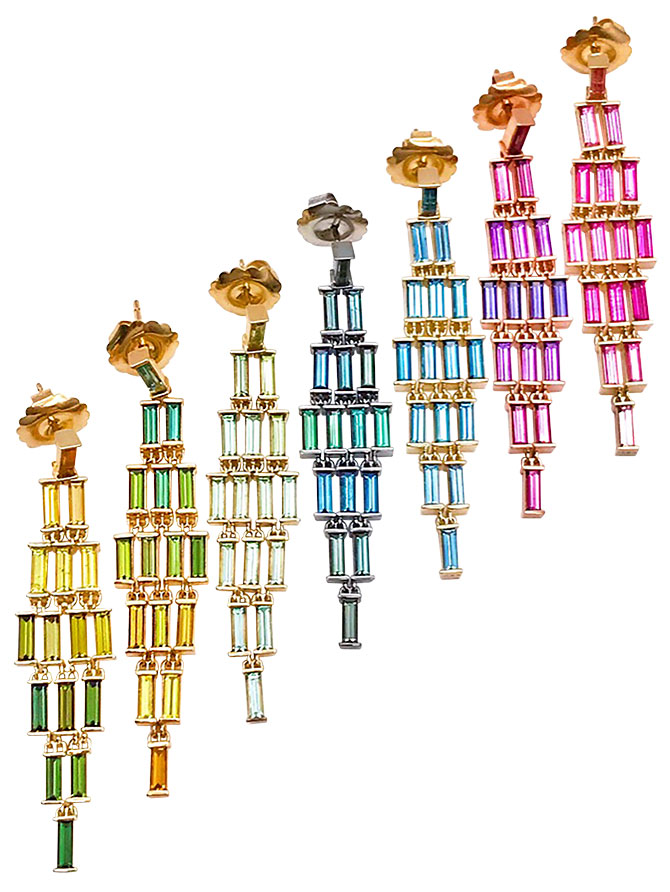 TRENDS
TRENDS
The baguette has become important in the construction of fine jewelry because of its purity of line and proportion and its adaptability of many uses.
—“Paris Forecasts Tremendous Jewelry Season,” The Jewelers’ Circular, October 1930
Baguette Cascade 14k gold earrings in multicolored tourmaline, London blue topaz, and garnet, amethyst, and iolite; $3,630–$10,475; janetaylor.com
COMPETITION
With this sort of mass competition, how can the independent jewelry retailer survive?
—“Can the Independent Jeweler Survive?” Jewelers’ Circular-Keystone, April 1967
BRIDAL
Today’s singles are not the losers of yesteryear.
—“49 Million Singles: A Spending Market,” Jewelers’ Circular-Keystone, February 1975
CRIME
A very common trick of diamond thieves is to…study the rings lying in the show window, and have one made exactly to pattern described. The gold is good, but the jewel is paste. They then come in twilight into the store and seek to exchange their imitation for the genuine.
—“Tricks of Diamond Thieves,” The Jewelers’ Circular and Horological Review, May 22, 1895
SALES
The longer I am in the business, the more convinced I become that the successful selling of diamonds is mainly a state of mind.
—“The Psychology of Diamond Selling,” Jewelers’ Circular-Keystone, October 1963
TRADE PUBLICATIONS
The retailer desires to know what is new in style, and original in idea, and we shall make special efforts to keep him well informed.
—“What a Trade Journal Should Aim to Be,” The Jewelers’ Weekly, November 1885
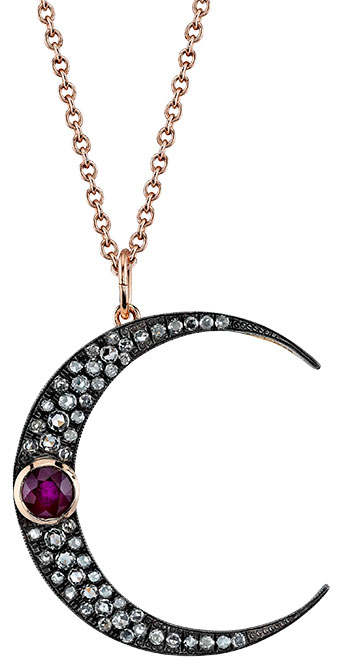 TRENDS
TRENDS
Tiny gold and silver moons are the fashionable talismans in Paris at present.… Necklets of small crescents are supposed to avert the evil eye and bring good luck—an old Roman superstition.
—“Trade Gossip,” The Jewelers’ Circular and Horological Review, October 1880
Luna necklace in 18k gold and oxidized silver with diamond pavé and ruby center; $5,800; andreafohrman.com
PEARLS
The oysters that inhabit New York Harbor and Ago Bay, Japan are quite different. But the poor things have one thing in common: an increasingly hostile environment.
—“Editorial: The Casualties of Ago Bay,” Jewelers’ Circular-Keystone, May 1973
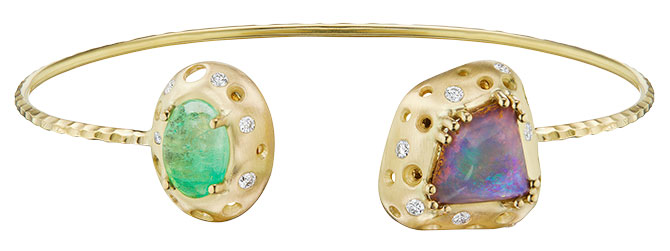 COLORED STONES
COLORED STONES
The bulk of the colored stone business in the average jewelry store is in the less expensive stones. These are usually set in birthstone or other types of rings and in moderately priced jewelry. The high priced, precious colored gems are most often sold in the diamond department.
—“How to Sell Colored Stones, Rings and Jewelry,” The Jewelers’ Circular-Keystone, December 1952
Chubby bezeled Oculus open cuff with Muzo emerald, opal, and diamonds in 18k fair-mined gold; $6,950; danabronfman.com
MILLENNIALS (BY ANY OTHER NAME)
Teen-agers set the pace for a new store operation; they are just about to enter the stage of acquirement. The older set have passed this stage or are “set” in their buying habits and it is difficult to wean them from their original sources of supply.
—“Teen-Agers Mean Business!” The Jewelers’ Circular-Keystone, December 1950
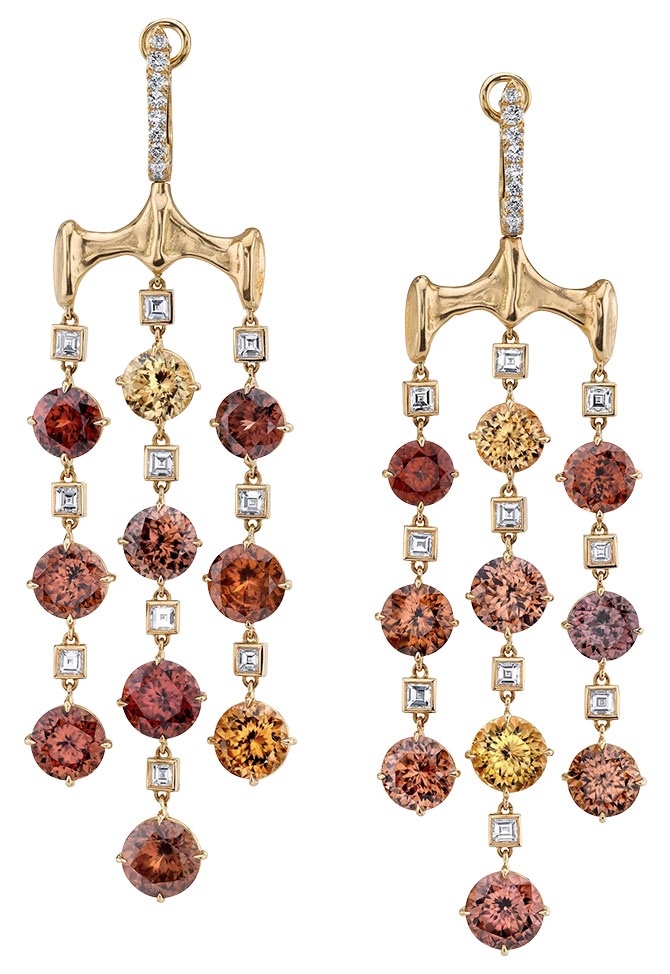 COLORED STONES
COLORED STONES
The zircon, for some inexplicable reason, appears to have remained almost unknown in the United States until very recent years.
—“The Zircon: ‘Gem of Mystery,’ ” The Jewelers’ Circular-Keystone, June 1936
Chrona earrings with 41.55 cts. t.w. round brilliant-cut natural zircons and 2.42 cts. t.w. square- and round brilliant-cut diamonds in 18k gold; price on request; vramjewelry.com
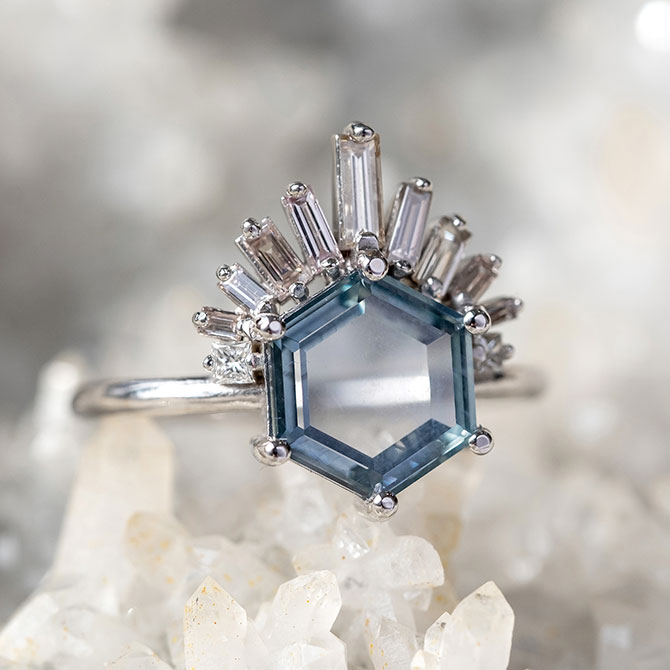 COLORED STONES
COLORED STONES
America is going to be increasingly counted on to supply future gems. And while she’s no mining giant, she’s no pygmy either. There are enough quantities of good gem material to support commercial production for several important jewelry-store gems.
—“Gem Mining USA: The Rush to Riches,” Jewelers’ Circular-Keystone, July 1977
2.86 ct. hexagon Montana sapphire and diamond ring in 14k white gold; $5,600; pointnopointstudio.com
BANKING
When a banker is approached for credit, the three words that immediately come to his mind and for which he wishes an answer is WHY? WHEN? HOW? WHY is loan required? WHEN will it be repaid? HOW, or from what source?
—“Get Your Business on a Bankable Basis,” The Jewelers’ Circular, October 1930
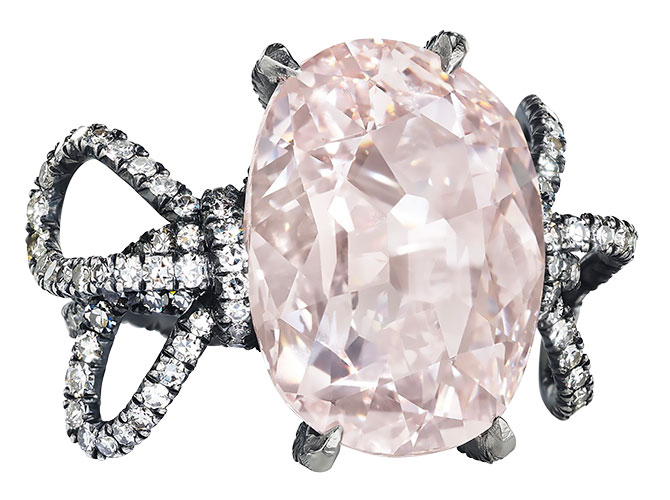 DIAMONDS
DIAMONDS
The word Golconda has always been a magical one in the diamond world, and surrounding it there seems to be as much or more of mystery and legend than of real and authentic history, but there is enough of the latter to make it interesting.
—“Golconda and the Golconda Mines,” The Jewelers’ Circular-Weekly, Feb. 4, 1914
The Pink Golconda Diamond, a ring by JAR with a 10.46 ct. oval brilliant-cut light pink diamond and single-cut diamonds; sold at Christie’s for $1,695,000
THE JEWELRY TRADE
It has oft-time been declared by our envious friends in Europe that the American people adorn themselves with more jewelry than any other civilized nation upon the face of the earth.
—“Speech of Col. John L. Shepherd to the New York Jewelers’ Board of Trade,” The Jewelers’ Circular and Horological Review, Feb. 6, 1895
(Golconda: courtesy of Christie’s)